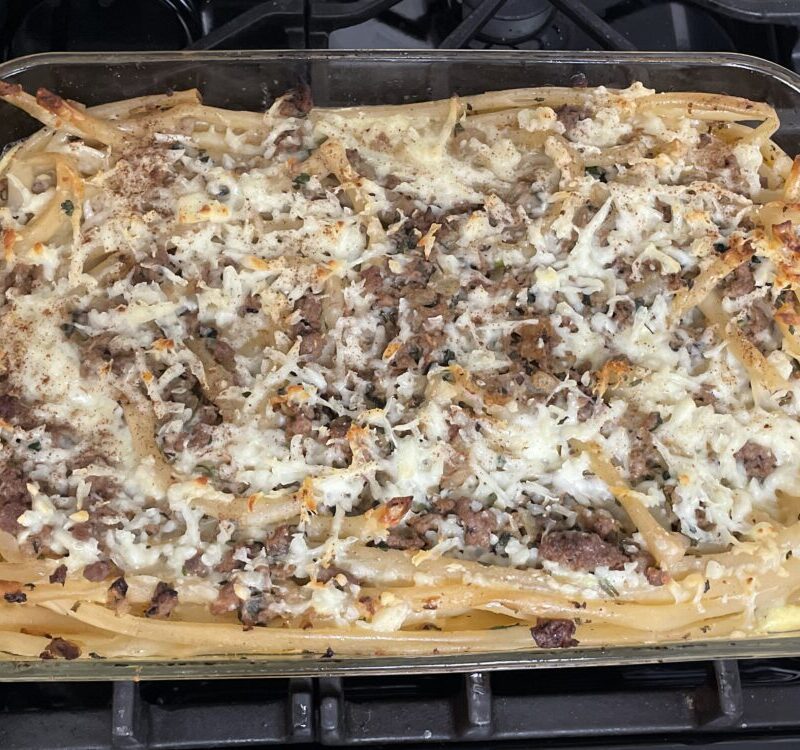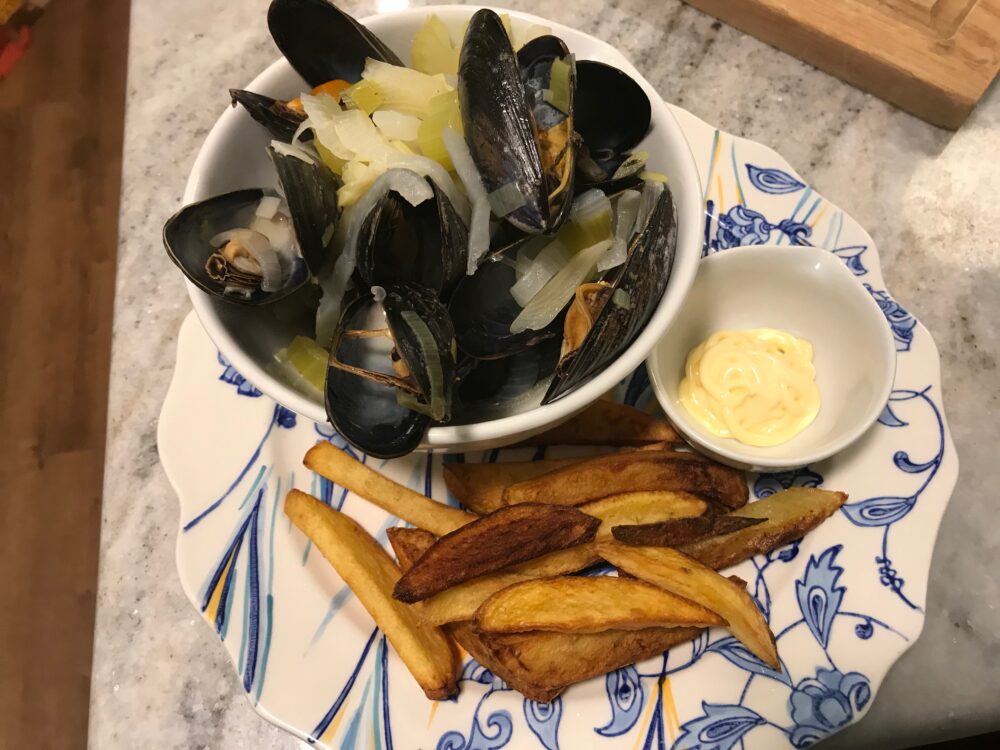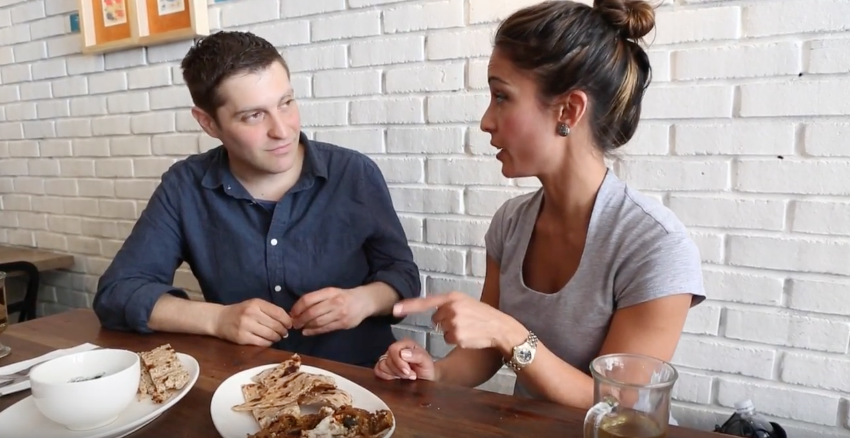We have been very lucky to have spent some time in Greece and its surrounding islands. One place we have not visited in that part of the world is a country that many Americans don’t even realize is its own country. With lots of influence from both the Greeks and the Turks, Cyprus is very much its own place.
THE CUISINE

In many ways, Cyprus seems like it’s in the middle of the world. The little island is technically part of Western Asia although more closely identifies with southern Europe. It’s in the alcove of the Mediterranean Sea where it just about dead ends into Lebanon and Syria.
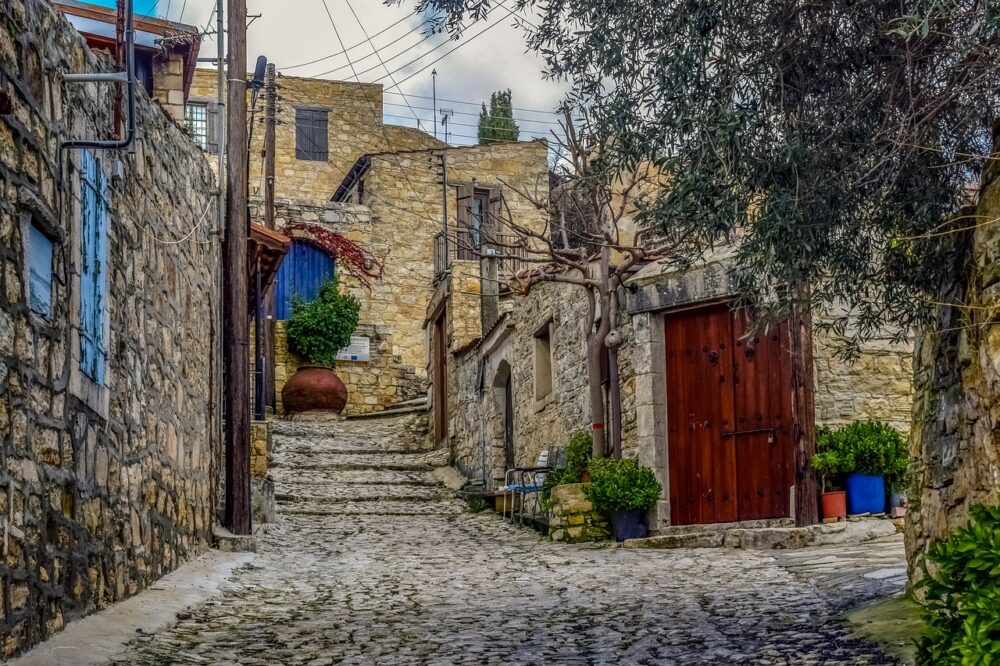
The people mostly identify as either Greek Cypriots or Turkish Cypriots, so the country is heavily influenced by its two big neighbors – although its food on the surface most resembles the food of Greece. Those lucky Cypriots.
Of course, being an island in the Mediterranean, there is no lack of love for seafood. However, meats, especially lamb, can often take center stage.
Much like the Greek diet, vegetables and fruits play a very important part in almost every dish, especially zucchini, cauliflower, tomatoes, carrots, and olives. And as far as grains go, bulgur is a staple, which definitely shows its influence from its eastern neighbors.
Traditional Dishes:
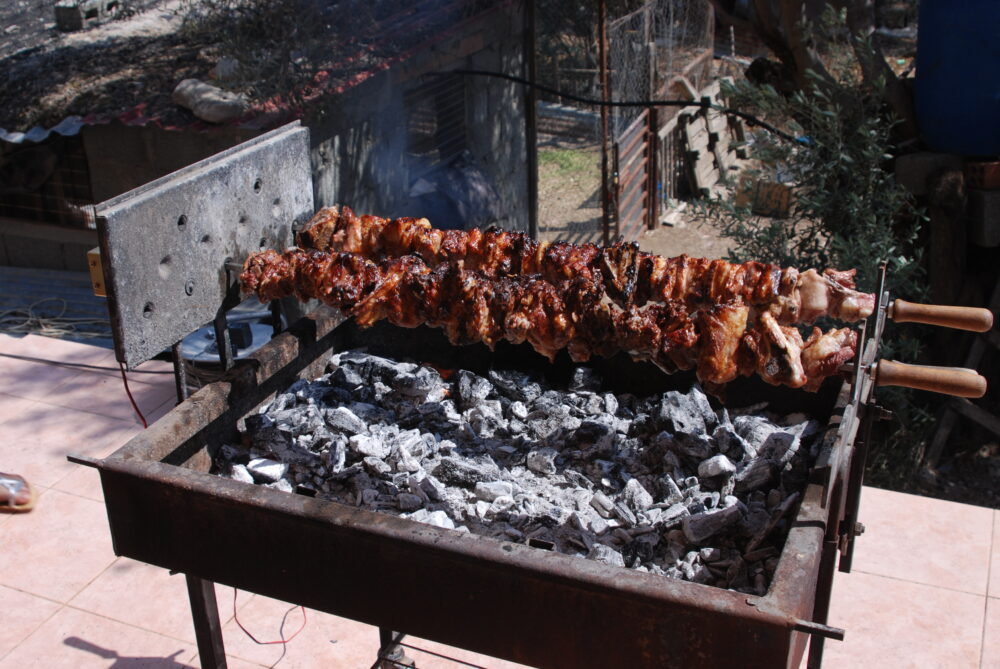

When I used to live in Astoria (the center of the Greek food scene in the city), I would order from this restaurant called Zenon Taverna. It was fantastic and while many people assumed it was Greek, it was actually Cypriot. Sadly, Zenon closed a few years ago.
So now we are left with a number of other Greek restaurants that also consider themselves Cypriot. It’s not untrue, but no place seems dedicated specifically to the cuisine of Cyprus.
Restaurants like Aliada in Astoria and the fancy Limani in Rockefeller Center add Cyprus to their menu, but the food is really mostly Greek. Which is not such a terrible thing.
THE VIDEO
Sam is starting to lose interest as he gets older, so I have to find ways of holding his attention if we’re going to complete this project.
Thankfully, the pasta we use in this dish is not your typical shape and allows for all sorts of playful ideas. I felt like I was back in theater school and given a prop to improvise with. This works very well when your scene partner is a six year old.
The only problem is that, at some point, the playing with our food turned into pretending to stick the pasta up our noses. My fault completely. Who’s the child now?
THE DISH

It’s been a while since we tackled just one dish, but this was a big one that took quite a bit of effort from everyone involved.
Makaronia Tou Fournou is essentially the Cypriot version of lasagna. It also very much resembles Greek pastitsio, but there are a few differences between the two.

Both are baked pasta dishes with ground meat, but in Greece they use beef or lamb and with the Cypriot version, it’s almost always pork. The cheese for this version is the Cypriot halloumi rather than Greek kefalotiri. There are no fresh tomatoes in Makaronia Tou Fournou and finally a minor but really unique difference is that the Cypriots use dried mint as a seasoning, which gives it a very nice rustic undertone.
THE RECIPES
inspired by
https://tasty.co/recipe/makaronia-tou-fournou-as-made-by-hannah-simone
https://www.youtube.com/watch?v=3tjJGrbOiqI&t=750s
Recipe Card

Makaronia Tou Fournou from Cyprus
Description
Taking influence from its neighbors, this dish is distinctly Cypriot with layers of long tubular macaroni, halloumi cheese, ground pork, and seasoned with cinnamon and dried mintMeat Layer
Pasta Layer
Bechamel Sauce
Garnishes
Instructions
Meat
-
Heat olive oil in large skillet.
-
Soften diced onions in pan, then add garlic and ground pork.
-
Brown the meat well.
-
Add dried mint, salt, black pepper, cinnamon, cumin, and tomato paste.
-
Stir for a few minutes.
-
Then add wine and 1/4 cup of water.
-
Simmer for about 15 minutes until reduced.
-
Add chopped parsley and set aside.
Pasta
-
Boil a big pot of salted water.
-
Add bucatini and cook for a little less than the directions say. It will continue to cook in the oven.
-
Drain pasta and quickly toss with some olive oil and some dried mint,
Bechamel Sauce
-
In a large pot, heat butter over medium low heat.
-
Once melted, add flour, salt, and nutmeg. Whisk for 2 to 3 minutes until a roux is formed.
-
Slowly add warm milk (about one cup at a time) and stir. Let thicken before adding another cup.
-
Keep stirring to prevent lumps from forming.
-
Once all the milk is incorporated, slowly add the egg yolks and mix well.
-
Add 1/3 cup halloumi and some black pepper.
Bake It
-
Preheat oven to 350° F.
-
Assemble the layers by starting with about half of the long pasta, then add the meat. Top that with remaining pasta and then the béchamel sauce.
-
Top with the remaining 1/4 cup of halloumi and sprinkle with some cinnamon.
-
Bake for about 45-60 minutes until golden on top and cooked through.
SPECIAL INGREDIENTS
Halloumi Cheese

Probably the most well-known and well-regarded contribution Cyprus has made to the culinary world is this incredible squeaky salty cheese known as halloumi.
Thankfully, it’s not difficult to find in this country – you may have seen it sold at your local supermarket. A similar cheese is often even made in the US and other parts of the world, but true Halloumi comes from its origin country of Cyprus.
It’s usually made from sheep or goat’s milk (although sometimes cow’s milk too) and is an unripened brined cheese. It is best when grilled or fried because it retains its shape due to a high melting point and has an even more delicious flavor when browned.
Halloumi is sometimes a dish all by itself, but it is an integral part of Makaronia tou Fournou.
Greek Macaroni or Bucatini

These long tube pastas are super fun to play with and don’t seem to be as common as penne or ziti, but they probably should be.
The Greek, Italians, and Cypriots understand that the long narrow tubes actually provide more space for a delicious sauce (like a béchamel) to be soaked up and revealed to the eater. This length of pasta is not required for Makaronia Tou Fournou, but it is certainly best. If bucatini is not available, ziti will do in a pinch.
HOW WE SCREWED IT UP
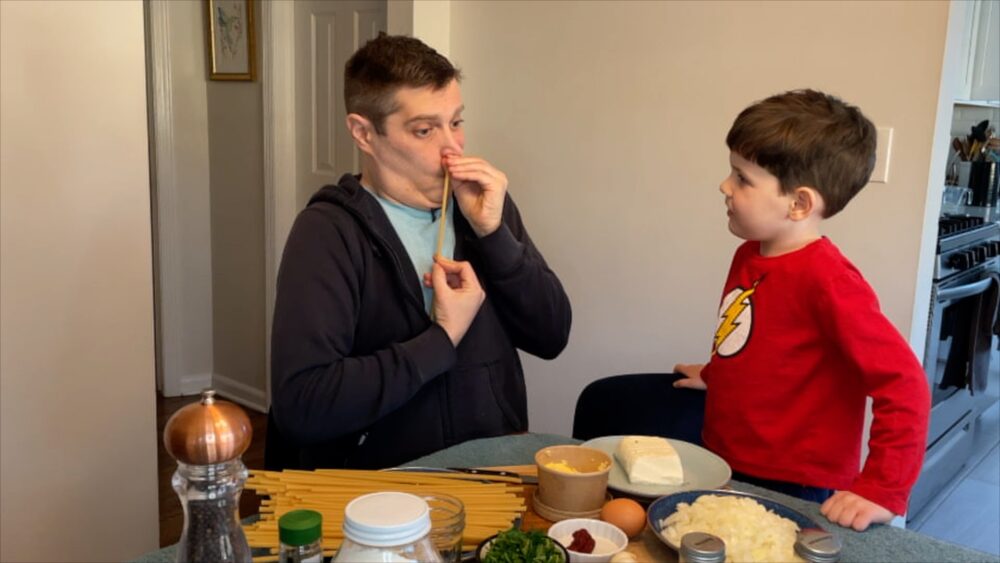
Well, to start with, sticking the ingredients up your nose is probably a big screw up. Any self-respecting food blog will tell you that.
Of course, playing with your food (especially when you are only serving it to yourself and boiling it before you eat it) can be fun. And spoiler alert: I didn’t really stick the pasta up my nose.
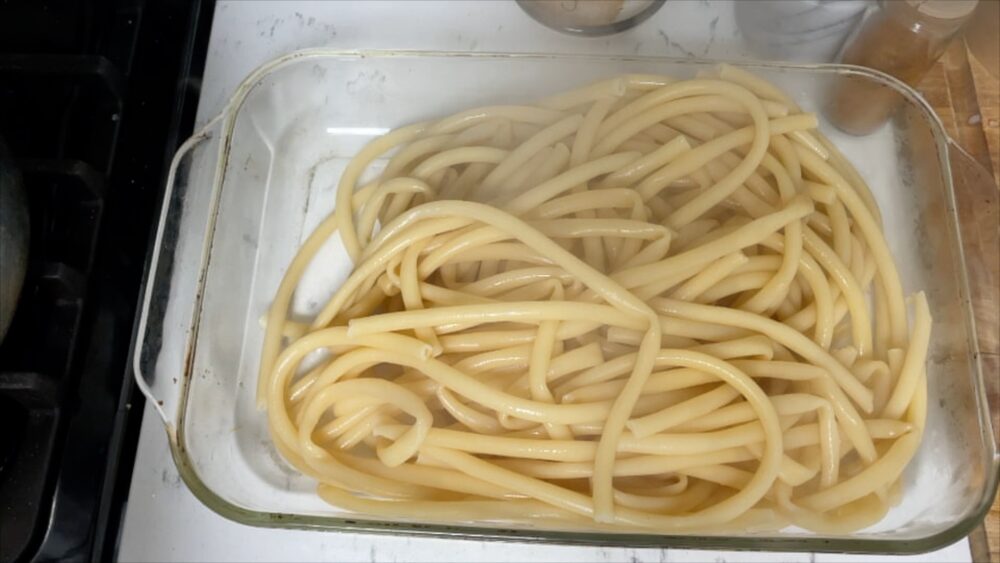
As for the actual cooking, I think the biggest issue we had was not taking the time to ensure the pasta tubes were straight. Perhaps I boiled them for too long because I had a hard time stretching them out from one end of the dish to another. So they became just a tangle of noodles.

The issues were mostly in the presentation. We couldn’t get this to look like a layered lasagna. All the components came out nice and flavorful, but this was just a mess of ingredients rather than a traditional composed dish. Maybe it’s because we stuck the noodles up our noses.
SAM’S REACTION
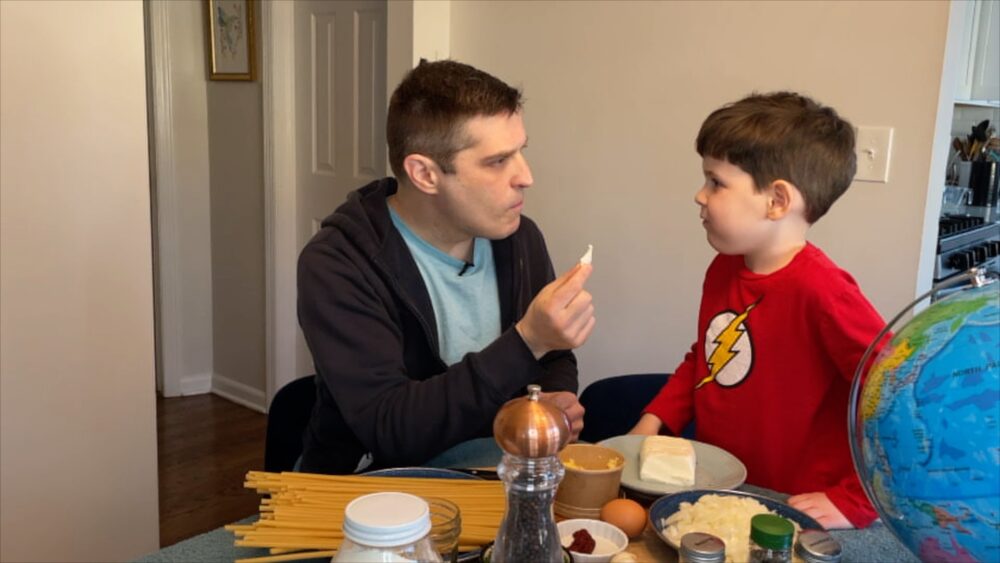
Well, the first test of Cypriot food for Sam was when we did a tasting of the halloumi cheese. As mentioned earlier, this cheese is better cooked than raw. That being said, we both enjoyed the squeak and the saltiness. That was a hit, although I know he would have liked it even better grilled.

The actual Makaronia tou Fournou might have been too many ingredients for this child. He refused to try it, even giving it a “yuck” upon seeing it. I don’t blame him since it didn’t look as good as it should have.
Instead, he had a great time slurping up the long hollow noodles with some olive oil. He may not be a fan of the casserole itself, but he certainly approves of the plain pasta.
NEXT TIME

Our next episode is a super exciting one. Not only is it the final C country (only took a few years!), but we are going to be going live (via Zoom) to the actual country to meet up with some friends who are going to teach us how to make some home cooked specialities from the Czech Republic!

